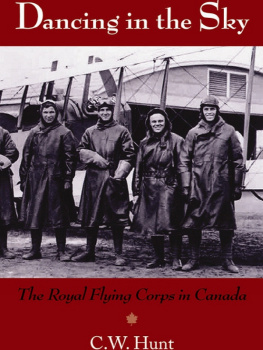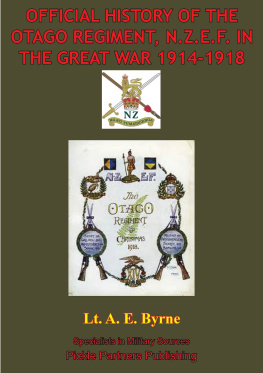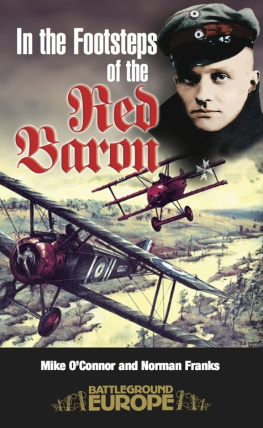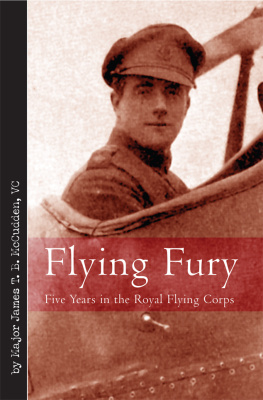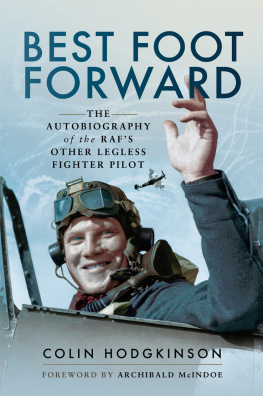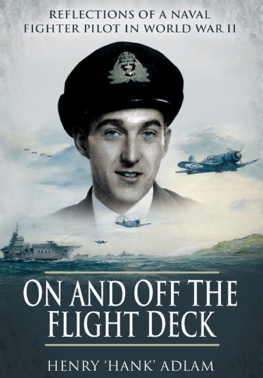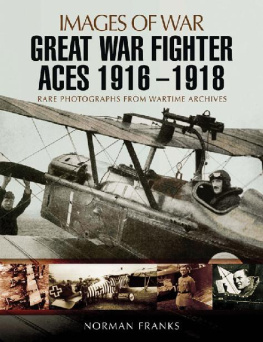First Published in Great Britain in 2010
By Pen and Sword Aviation
an imprint of
Pen and Sword Books Ltd
47 Church Street
Barnsley
South Yorkshire
S70 2AS
Copyright Colin Pengelly, 2010
ISBN: 978 1 84415 904 8
ePub ISBN: 9781848849785
PRC ISBN: 9781848849792
The right of Colin Pengelly to be identified as the author of this work
has been asserted by him in accordance with the
Copyright, Designs and Patents Act 1988.
A CIP catalogue record for this book is available from the British Library.
All rights reserved. No part of this book may be reproduced or transmitted
in any form or by any means, electronic or mechanical including photocopying,
recording or by any information storage and retrieval
system, without permission from the Publisher in writing.
Typeset in Palatinio Light by S L Menzies-Earl
Printed and bound in England
by CPI
Pen and Sword Books Ltd incorporates the imprints of
Pen and Sword Aviation, Pen and Sword Maritime, Pen and Sword
Military, Wharncliffe Local History, Pen and Sword Select,
Pen and Sword Military Classics and Leo Cooper.
For a complete list of Pen and Sword titles please contact
Pen and Sword Books Limited
47 Church Street, Barnsley, South Yorkshire, S70 2AS, England
E-mail:
Website: www.pen-and-sword.co.uk
Introduction
T he 7 May 2007 marked the 90th Anniversary of the death of Albert Ball. Ball was, at the time of his death, an iconic figure who represented the offensive spirit of the Royal Flying Corps (RFC) and whose loss was keenly felt. He is still remembered in his hometown of Nottingham and in Annoeullin where there is a College bearing his name. This book seeks to take a fresh look at his life and achievements.
As the last of the Great War veterans disappear and the War becomes a milestone in history rather than a living memory then I hope this book will stir interest in the War and keep in peoples minds the sacrifices made by a whole generation of young people throughout the world for what they believed in. Albert Ball, like so many others, was dead before he reached twenty-one. He was a fighterpilot in the first war in the air but he is fortunate that his deeds became famous when the equally important work of the rest of the aircrew of the air services of the great powers have largely become lost to memory, except for those who choose to look in their national archives.
The Star of Aviators was the title given to Albert Ball by a French News Agency when news of his death became known to the public of the Allied Countries. Despite the wish of the British Army not to give publicity to the feats of their airmen, the name of Albert Ball had gradually become known throughout 1916. By the time he returned home for his last leave he was a national hero and celebrated as such, especially in Nottingham.
Albert Ball has been the subject of four previous biographies: two almost contemporary with his life, one in the 1930s by R. H. Kiernan which remained for many years the standard biography and, some thirty years ago, the late Chaz Bowyer produced a further biography, which was the first modern appraisal of Albert Ball and his achievements. Bowyer was still able at that time to talk to members of Balls family and his fiance as well as people who had flown with and known Ball as a friend or a squadron companion. This makes Bowyers work important for the contribution it makes to the knowledge of the family background, which is now irreplaceable. An historian looking to reappraise Albert Ball has this basis of previous research and the private and official letters and correspondence to work from.
It is unfortunate that, after the appearance of Bowyers book, the Ball family were prevailed upon to part with certain family papers, which were never returned. At some time Albert Balls diary, which had been recovered by the family after his death, along with other papers, disappeared and is not held in the Ball Papers in the Nottingham Archives. The loss of the diary is particularly unfortunate for the biographer. The last biographer to see it was R. H. Kiernan in the 1930s who describes it as an honest record and in its sum reveals a love of fine motives, a realisation of frailties, a clean and manly heart situation existed with Albert Ball who received and wrote many letters but only those sent by him now survive.
Albert Ball was a typical Englishman of his time. Deeply patriotic and deeply religious and with a strong love for his family, particularly his mother. Along with many others he felt it his duty to enlist and, with his newly discovered enthusiasm for flying, applied for a transfer to the RFC which he thought would get him into contact with the enemy more quickly. He was born into a middleclass family and was shaped by his upbringing and his education at a minor public school. Essentially, he was a loner, preferring whenever he could, to seek a billet to himself. To strangers he was reserved but polite but there is no element of the strain of snobbery, which is noticeable in the correspondence of his contemporary Arthur Rhys Davids. This probably indicates the difference in attitude brought about by the classical education, which Rhys Davids received at Eton, and the more practically based education which Ball received at Trent.
Ball was within ten days of his 18th birthday when war broke out. Like many others he was dead before he had reached twenty-one, but, unlike his anonymous contemporaries shot out of the skies in their vulnerable reconnaissance machines, killed fighting in the trenches or lost in the explosion of the Battle Cruisers at Jutland, he was not just mourned by his family, friends and companions. He had assumed the status of a national hero. His deeds were known throughout the Allied and Neutral countries and his loss was marked accordingly.
Air fighting had been gradually intensifying from the time of the introduction in 1915 of the German Fokker monoplanes equipped with the Anthony Fokker synchronising gear. Although the performance of the Fokker was moderate and was exceeded by some Allied designs, in the hands of two German pilots, Boelcke and Immelmann it was a deadly weapon and one which the British and French air services needed to counter.
Albert Balls career had started with the BE2c (an aircraft for which Ball had no time), variants of which had been a common prey of the Fokker. The BE2c was not a machine that was easily able to defend itself because of the arrangement of the pilot in the rear seat and the observer in the front seat. Even with this unpromising equipment Balls letters make it plain that, when flying the BE on operational patrols, he was looking to engage the enemy, though he recognised the deficiencies of the BE as an offensive weapon. It was when Ball was given his chance to fly single-seater scouts that his particular talents became plain.
He was not, according to Edward Baumann, his first flying instructor, a natural pilot, but as he progressed through training, particularly at the Central Flying School (CFS), his skills developed. Once he was given the chance to fly the Bristol Scout and later the Nieuport Scout it was apparent where his talent lay and it was with the latter plane that he began to make his name.
By the end of 1916, following the loss of Lanoe Hawker, Ball was indeed the guiding star of the RFC. His deeds and prowess were known throughout the Corps and his example was contagious though few could emulate his method of fighting. A year later Captain Ira Jones of 74 Squadron, idoliser of Mannock though he was, was said to have a note pinned up in the cockpit of his SE5a:Remember Ball!They Must Fall!


